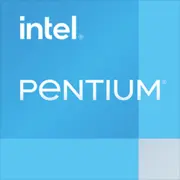Intel Pentium G2100T

Intel Pentium G2100T: A Budget Processor for Basic Tasks in 2025
(April 2025)
Key Specifications: Architecture, Process Technology, and Key Features
The Intel Pentium G2100T processor, released in 2013 on the Ivy Bridge architecture, remains an example of an energy-efficient solution for less demanding tasks. Despite its age, it still holds relevance in the budget build niche.
Technical Details:
- Codename: Ivy Bridge (3rd generation Intel Core).
- Process Technology: 22 nm.
- Cores/Threads: 2/2 (without Hyper-Threading support).
- Base Frequency: 2.6 GHz (no turbo boost).
- Cache: 3 MB L3.
- TDP: 35 W.
- Integrated Graphics: Intel HD Graphics (base version, 650–1050 MHz).
Key Features:
- Supports SSE4.1/4.2, AES-NI, VT-x instructions.
- Energy-efficient: ideal for passive cooling systems or compact cases.
- Compatible with Windows 10/11 and Linux (drivers available).
Performance:
In Cinebench R20 tests, the processor scores around 250–270 points (for comparison, the modern Celeron G6905 scores ~600 points). This is sufficient for working with office applications, web browsing (up to 10 tabs), and light editors like Photoshop CS6.
Compatible Motherboards: Sockets and Chipsets
Socket: LGA 1155.
Supported Chipsets:
- Budget: H61, B75 (maximum of 2 DDR3 slots, limited SATA/USB ports).
- Business-oriented: Q75, Q77 (supports vPro, but this is no longer relevant in 2025).
- Premium (rare): Z77 (overclocking is not supported for G2100T).
Examples of Motherboards:
- ASUS P8H61-M LE: a compact mATX (new units priced at $50–70).
- Gigabyte GA-B75M-D3H: 4 DDR3 slots, SATA III (price — $60–80).
Selection Tips:
- Ensure the BIOS is updated to the latest version (Windows 11 support is possible through modifications).
- Avoid boards with damaged capacitors — they are common in the secondary market.
Supported Memory Types
Memory Type: DDR3 (not compatible with DDR4/DDR5!).
- Frequencies: up to 1333 MHz (officially), but some boards allow overclocking to 1600 MHz.
- Maximum Capacity: 32 GB (4 slots of 8 GB each).
Recommendations:
- Use dual-channel mode (2 sticks of the same size) for a +10–15% performance increase in gaming and rendering.
- The optimal choice for 2025 is DDR3-1600 8 GB (2x4 GB) for $25–30.
Power Supply Recommendations
With a TDP of 35 W, the processor puts minimal load on the system. However, it is important to consider the other components:
- Integrated Graphics: adds 10–15 W.
- HDD/SSD, fans: ~20 W.
Minimum Requirements:
- 300 W power supply (for example, EVGA 300 W 80+ Bronze, $35).
- For systems with a discrete graphics card (e.g., GT 1030) — 400 W (Corsair CV450, $45).
Tip: Don't skimp on the PSU! Older models with low efficiency can cause instability.
Pros and Cons of the Intel Pentium G2100T
Pros:
- Energy Efficiency: suitable for HTPC or office PCs with passive cooling.
- Low Price: new processor (if found for sale) — $40–50.
- Reliability: a time-tested architecture.
Cons:
- Outdated Platform: no support for NVMe, USB 3.1, Wi-Fi 6.
- Weak Upgrade Potential: maximum upgrade to Core i7-3770, which is also outdated.
- No support for modern games: even CS2 will run on low settings at 30–40 FPS.
Use Cases
1. Office Tasks: Working with documents, email, Zoom.
Example: Paired with an SSD, the system boots in 15 seconds, Excel with spreadsheets of 10,000 rows runs without lags.
2. Multimedia: Watching 1080p video (4K via YouTube lags), streaming via Plex.
Example: A PC in the living room with Kodi on Linux — quiet and economical.
3. Retro Gaming: Games up to 2012 (Half-Life 2, GTA IV on low settings).
4. Server Tasks: NAS based on OpenMediaVault (but not for heavy RAID arrays).
Comparison with Competitors
1. AMD Athlon 200GE (2018):
- Pros: DDR4 support, Vega 3 graphics.
- Cons: secondary market price — $60, higher power consumption (35 W vs 35 W).
- Conclusion: Athlon is better for modern tasks but pricier.
2. Intel Celeron G5905 (2020):
- Pros: LGA 1200 socket, DDR4-2666.
- Cons: new price — $55, but requires a new motherboard ($70+).
3. Raspberry Pi 5:
- Pros: power consumption of 5 W, HDMI 2.1 support.
- Cons: x86 software does not work, weak performance.
Practical Assembly Tips
1. Case Selection: Mini-ITX (Cooler Master Elite 110) or compact mATX.
2. Cooling: The stock cooler is sufficient, but for quiet operation, consider the Deepcool GAMMAXX 200T ($15).
3. Storage: An SSD is essential (Kingston A400 240 GB, $20).
4. Networking Options: Add a PCIe Wi-Fi 5 adapter (TP-Link Archer TX50E, $25).
Final Conclusion: Who is the Pentium G2100T Suitable For?
This processor is worth considering:
- Owners of old PCs for upgrades without replacing the motherboard.
- Retro computer enthusiasts building systems from the 2010s.
- Offices where low cost and reliability are important.
Why not choose something newer? If the budget is strictly limited ($100–150 for the whole build), the G2100T remains a viable option. However, for future upgrades, it's better to add $50–70 and opt for the Celeron G6905 or Ryzen 3 3200G.
Price in 2025: New processors are nearly unavailable, but leftovers can be found for $40–50. Motherboards start at $50.
The Intel Pentium G2100T is an example of a "workhorse" that, despite its age, finds application in the era of DDR5 and 5 nm process technologies. Its primary advantage is minimal investment required here and now.
Basic
CPU Specifications
Memory Specifications
GPU Specifications
Miscellaneous
Benchmarks
Compared to Other CPU
Share in social media
Or Link To Us
<a href="https://cputronic.com/cpu/intel-pentium-g2100t" target="_blank">Intel Pentium G2100T</a>